Keywords
|
| LTE, QoE, IP, VoIP, VoLTE, G.729 |
INTRODUCTION
|
| With the apparition of the 3rd generation mobile network the usage of the mobile technology is not limited anymore to voice service usage for CS or ordinary PS usage such as Mail and ordinary internet, but it’s become more evolved and provide more services like video over IP and Voice Over IP named by VoHSDPA for 3G+ technology and VoLTE for LTE technology. |
| The most recent mobile technology is LTE that provide a high data speed in uplink and downlink with high level and strict quality of service provided because of usage of intelligent entities in the network starting from the eNodeB to the core entities that use router from 4th and 5th generation. For that the research team aim to continue with the same topic as the previous works by sorting out if the G729 codec is recommended for VoLTE usage |
| In the previous paper of the research team, their finding was that G.729 codec is the best compatible codec for VoIP utilization, the performance of VoIP using G.729 is the better compared to the other VoIP codec like G.723 and G.711 [7]. |
| The actual work and interest of the research team, presented in this paper will study in detail the performance of VoLTE when using G711 as a codec after implementation on the most important software for LTE simulation named OPNET 17.6 |
| After introducing the paper, the rest of the paper is organized as follows, Section II presents theory background about VoIP technology, Section III presents principal of LTE technology and the different entities. Different simulation scenarios are presented in Section IV. Results and discussion are presented in section V, and finally a general conclusion of this work is presented in Section VI. |
II. RELATED WORK
|
| In [12] authors develop a new LTE architecture with advanced functionality to have more flexible network and more advanced functionality; this new architecture named LTE advanced. In this paper we try to know if G729 can work propyl for VoLTE and gives a results with good performance |
III. VOIP TECHNOLOGY
|
| A. VoIP Transport System |
| Different network functions are required for deliveringVoIP traffic over data networks. These functions include callsignaling and control and media transport. Differentsignaling protocols are used, with the common ones beingH.323 and Session Initiation Protocol (SIP) [9], [2]. These protocolsare used to setup, control and terminate a VoIP call session. Once a session is established, voice stream is transportedusing two transport protocols, namely Real-Time Protocol(RTP) and User Datagram Protocol (UDP) over IP. WhereasUDP provides a connectionless service suitable for realtimetransmission, RTP provides a means for carrying real-timedetails such as packet sequence and time-stamping. |
| B. VoIP Codecs |
| RTP and UDP are used to carry voice signals that aredigitally encoded. This means that each voice signal isconverted from its analog form into a digital form at thetransmitter device. The analog signal is firstly sampled basedon a sampling rate of 8 KHz, and then a quantization processtakes place in which each sample is represented by 8 or 16 bits. Next, the output is encoded according to many factors: thecompression rate and the framingtime or the frames length. Finally, one or more of these frames are encapsulated into anRTP/UDP/IP packet for transmission over the network. Allthese processes are accomplished by one of various audiocodecs, each of which uses a different algorithm. Table Ishows some features of the most common codecs: G.711,G.723.1 and G.729, and how they vary in many aspects such asbit rate, encoding algorithm and coding delay [6][2]. |
| C. QoS Requirements of VoIP |
| Ensuring high voice call quality over the “best effort” IPnetwork is the key challenge in delivering VoIP traffic. QoSfor VoIP is defined using different parameters, with thecommon ones being end-to-end delay, jitter and packet loss [9]. The most metrics is: |
| End to End Delay: End-to-end delay consists of end-system and networkdelay. The end-system delay occurs due encoding anddecoding delay and de-jitter buffering delay. The network delayis mainly caused by the propagation and queuing delay at network devices. A one-way end-to-end delay of 150ms isthe recommended delay value defined by the G114recommendation of the International Telecommunication Union (ITU-T). It also considers a delay of 400ms is themaximum acceptable value. However, the recommendationalso shows a measurement of user satisfaction against theacceptable end-to-end delay. It shows that after a delay ofabout 260 ms, there will be unsatisfied users because the delaystarts to be noticeable. In this paper, an end-to-end delay of 260ms is considered to be the maximum acceptable delay [7]. |
| Jitter: the end-to-end delay variation between two consecutivepackets is called jitter. A jitter of less than 50ms is consideredto be acceptable for high quality VoIP calls.Packet lossoccurs in the network due to many factors such as congestionnetwork failure. It is also caused by end systems when the jitterbuffer is overloaded. a packet loss rate upper than 10% is tolerable for high bit rate codecs such as G.711 whereas 5% is considered to be the acceptable limit for low bit rate codecs such as G.729A [7]. |
| Throughput:Throughput refers to how much data can be transferred from source to destination in a given amount of time. It depends upon the bandwidth also. Throughput is a measure of data rate (bits per second) generated by the application |
| D. SIP Architecture |
| The Session Initiation Protocol (SIP), defined by Internet Engineering Task Force (IETF), isan application- layer control (signaling) protocol for establishing, modifying and terminatingsessions with one or more participants. These sessions may be Internet telephone calls,multimedia distribution or multicast conferences. It has been standardized within IETF forthe invitation to multicast conferences and Internet telephone calls. In the context of SIP, auser is usually identified by an email- like address such as cleint@sip.ma, where “client” is auser name or phone number, and “sip.ma” is a domain name or numerical address of theuser [9]. |
IV. LONG TERME EVOLUTION NETWORK ( LTE)
|
A. LTE description
|
| The main function of IP Network is to send the user data from the source to destination. Data is constructed as a series of packets. All the packets are routed through a chain of routers and multiple networks to reach the destination. In the Internet, router takes independent decision on each incoming packet. When a packet reaches a router, it forwards the packet to the next hop depending on the destination address present in the packet header. The process of forwarding the packets by the routers is done until the packet reaches the destination. |
| 3GPP Long-term Evolution (LTE) [1] is the latest standardin the GSM/UMTS line specified in 3GPP Release 8. Itreplaces the WCDMA transmission scheme of UMTS so thatOFDMA (Orthogonal Frequency-Division Multiple Access) isused for downlink while SC-FDMA (Single-carrier FDMA) isused for uplink traffic. |
| Orthogonal frequency-division multiplexing (OFDM) is anFDM type of scheme that is used as a digital multi-carrier modulation method where a number of closely spacedorthogonal sub-carriers are used to carry data. The data isdivided into several parallel data streams or channels, one foreach sub-carrier. A flexible resource allocation is achieved through dynamic assignment of sub-carriers to a specificnode.Each sub-carrier is modulated with a conventionalmodulation scheme at a low symbol rate. Furthermore, MIMO(multiple-input, multiple-output) antenna technology is used inLTE. Minimum transmission time interval (TTI) is 1 ms and64QAM was added as a modulation scheme[1]. |
| The Dedicated Traffic Channel (DTCH) in LTE is mappedto DLSCH and ULSCH (Downlink Shared Channel and UplinkShared Channel) respectively. It uses HARQ and adaptsdynamically to the link quality. Spectrum flexibility was animportant design goal for LTE and it was built to scale usingbandwidths ranging from 1.4 MHz to 20 MHz in both pairedand unpaired configurations. A wide range of frequency bandsare expected to be used for LTE including the 700 MHz bandallowing for indoor usage and wide coverage.LTE provides data rates up to 100 Mbits/s in the downlinkdirection, uplink data rates up to 50 Mbps in the uplinkdirection and latencies in the radio access network at 10milliseconds [1]. |
B. LTE architecture
|
| The system is non-backward compatible withGSM or UMTS and hence requires a new infrastructure. Theupgraded version LTE Advanced is designed to meet therequirements from the fourth generation (4G) radio accessnetwork of 1 Gbits/s in data rate for stationary applications and100 Mbits/s for mobile applications. The first commercial LTEnetwork was opened in Stockholm and Oslo in December2009. |
| A wide range of frequencies are expected to be used.The structure of LTE networks is changed radically fromthe GSM and UMTS network structures see figure 1. eNB(Evolved NodeB) is the only node type in EUTRAN (EvolvedUTRAN) responsible for all radio interface-related functions.Main node types in the EPC (Evolved Packet Core) are theMME (Mobility Management Entity) responsible for mobility,UE (User Equipment) identity, and security management functions, the S-GW (Serving Gateway) terminating theinterface towards E-UTRAN, and the PGW (PDN Gateway)terminates the interface towards the packet data network(PDN)[12]. |
C. LTE E-UTRAN overview
|
| eNBs provide the E-UTRAN withthe necessary user and control plane termination protocols. Fig. 2 gives a graphical overview of both protocolstacks. In the user plane, the protocols that are includedare the Packet Data Convergence Protocol (PDCP), theRadio Link Control (RLC), Medium Access Control (MAC),and Physical Layer (PHY) protocols. The control plane stackadditionally includes the Radio Resource Control (RRC)protocols[12]. |
| The main principal functionalities of each layer are summarized in the following |
| • NAS (Non-Access Stratum) |
| • RRC (Radio Resource Control) |
| • RLC (Radio Link Control) |
| • MAC (Medium Access Control) |
| D. Evolved Packet Core overview |
| The EPC is all-IP-based core network that can beaccessed through 3GPP radio access (UMTS, HSPA, HSPA+and LTE) and non-3GPP radio access (e.g. WiMAX, WLAN),allowing handover procedures within and between bothaccess types. The access flexibility to the EPC is attractivefor operators since it enables them to have a single corethrough which different services are supported. The maincomponents of the EPC and their functionalities are asfollows. |
| • Mobility Management Entity (MME) |
| This is a key control plane element. Among other functions,it is in charge of managing security functions (authentication, authorization, NAS signaling), handlingidle state mobility, roaming, and handovers. Also selectingthe Serving Gateway (S-GW) and Packet Data NetworkGateway (PDN-GW) nodes is part of its tasks. TheS1-MME interface connects the EPC with the eNBs. |
| • Serving Gateway (S-GW) |
| The EPC terminates at this node, and it is connected tothe E-UTRAN via the S1-U interface. Each UE is associatedto a unique S-GW, which will be hosting severalfunctions. It is the mobility anchor point for both localinter-eNB handover and inter-3GPP mobility, andit performs inter-operator charging as well as packetrouting and forwarding. |
| • Packet Data Network Gateway (PDN-GW) |
| This node provides the UE with access to a Packet DataNetwork (PDN) by assigning an IP address from thePDN to the UE, among other functions. Additionally, theevolved Packet Data Gateway (ePDG) provides securityconnection between UEs connected from an untrustednon-3GPP access network with the EPC by using IPSectunnels. |
V. SIMULATION SCENARIOS
|
| OPNET 17.6 Simulator is used to simulate VoLTE architecture. OPNET (Optimized Network Engineering Tools) [7] is a discrete event simulation tool, which provides a comprehensive development environment supporting the modeling and simulation of communication networks and which contains datacollection and data analysis utilities. OPNET allows a various numbers of closely spaced events in a sizeable network to be represented accurately. It uses a modeling approach where networks are built of nodes interconnected by links. Each node’s behavior is characterized by the constituent components and these components are modeled as a state-transition diagram [1]. |
| In this paper presents we present an architecture of VoLTE that use 6 eNodeB with 9 LTE UE that support VoLTE for E-UTRAN part. A core network the type Nexus 7000 attached to an IP backbone. Furthermore, two items were added and configured to allow VoLTE clients and servers to run VoLTE, these are the Application Configuration and Profile Configuration objects. The ApplicationConfiguration object provides predefined applications such as VoIP with configurable parameters. On the other hand, the ProfileConfiguration object defines the behavior of the applicationregarding the start and the end time and repeatability. |
| For LTE parameters such as used quality of service, used Bandwidth and used frequency is defined in LTE configuration item |
| The figure 3 shows the general architecture for our simulation. |
| A. Simulation model |
| The topology of simulation is illustrated on figure 3. |
| Below are the common components between the two architectures: |
| ? 6 eNodeB the type “LTE eNodeBatm, Ethernet” network each one have 3 user equipment that support VoLTE |
| ? An IP-Phone also using SIP as the signaling protocol for both sides. |
| ? All the eNodeB have been connected by using 1000 Base-T links |
| The eNodeB model is diescubed in the figure 4: |
| The application definition and profiles definition was added to the simulation in order to define used applications, in our case three applications with its profiles VoIP, FTP and Video. For Voice codec the G.729 is chosen as a codec as shown in the figure 4 below: |
| For LTE radio parameters is described below and shown in the figure 6: |
| ? DL frequency is 2300 Mhz and UL frequency is 1920Mhz |
| ? Bandwith is 20 Mhz |
| ? Cyclix prefix type is 7 symbols per slot |
VI. RESULTS AND DISCUSSION
|
| The obtained measurement is analyzed and discussed to evaluate the performance of VoLTE to sort out if G.729 is the best codec as per IUT recommendation. The most affected parameters of QoS in VoLTE are: jitter, MOS, end-to-end delay and traffic (send and receive). The period of simulation is 100 minuts in order to display the results in a clear way. The Figure 6 shows the detail of execution time. |
A. Traffic received and sent:
|
| Figure 7 describes the traffic sent and received in the network in byte/second. The traffic send is equal the received traffic and both of them is start at 2nd minute. The maximum researched value is 145 bytes/second |
B. End to End Delay
|
| Figure 8 shown the End to End delay. We can note that the value of E2E delay become stable after the second minute time that the traffic become higher. The value is 0.12 second and that is very acceptable. |
C. Mean opinion Score:
|
| MOS gives a numerical indication of the perceived quality of the media received after being transmitted and eventually compressed using codecs. In our case as shown in Figure 9, The MOS value is between 3.8 this is very acceptable for VoLTE |
D. Jitter:
|
| Jitter is the time variation between packets arriving caused by network congestion, timing drift, or route changes. In the simulation the value of jitter is very low around 0. Figure 10 shows the variation of jitter |
VII. CONCLUSION AND FUTURE WORK
|
| This paper evaluate the performane of VoLTE after implementation with OPNET by using G.729 as a codec. The result shows that the VoLTE performance is very good specially for MOS, Jitter ande End to End Delay. From the results we can conclud that G.729 it can be used as a codec for VoLTE implementation. This work has shown that the performance of VoLTE is very acceptable when using G.729 as a codec and it can be implemented for VoLTE usage. The research team aims to extend this study to compare the network performance VoLTE (Voice over Long Term Evolution) using G.729 and G.711 as a codec and also for different possible configuration for LTE. |
Figures at a glance
|
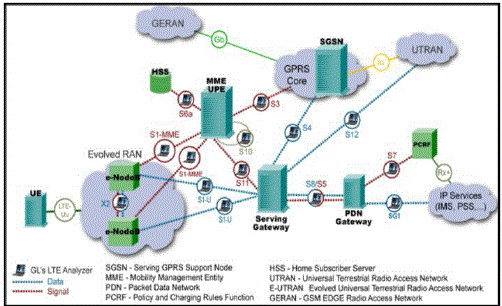 |
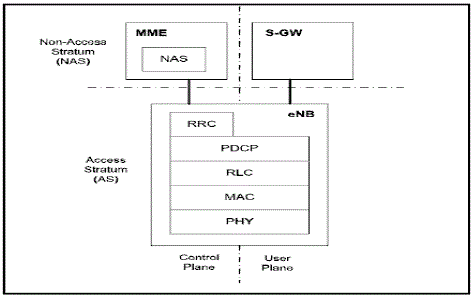 |
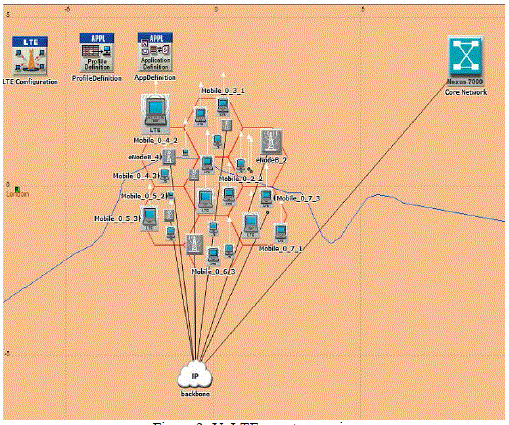 |
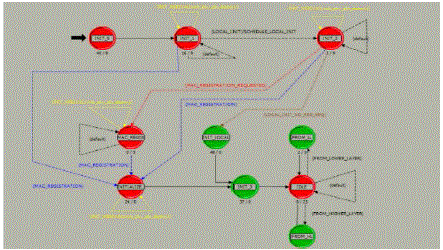 |
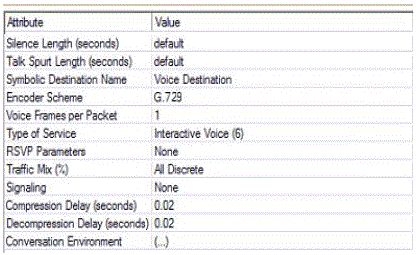 |
| Figure 1 |
Figure 2 |
Figure 3 |
Figure 4 |
Figure 5 |
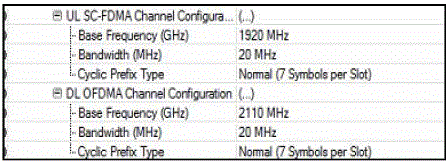 |
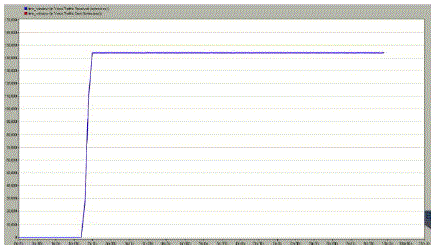 |
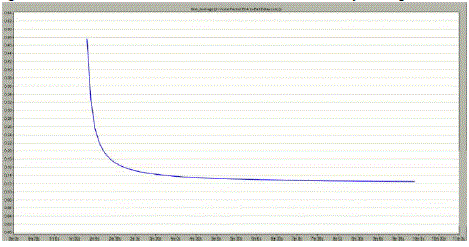 |
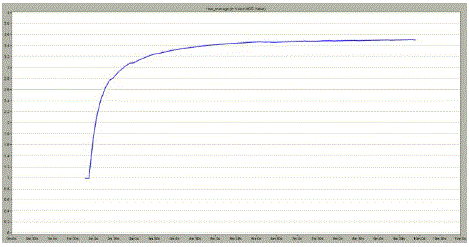 |
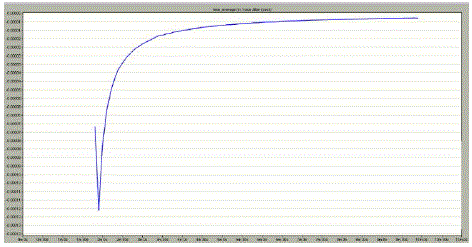 |
| Figure 6 |
Figure 7 |
Figure 8 |
Figure 9 |
Figure 10 |
|
| |
References
|
- 3GPP TS 36.401, Evolved Universal Terrestrial Radio Access (EUTRA)and Evolved Universal Terrestrial Radio Access Network (EUTRAN)Overall description, Stage 2. June 2010.
- EmadAboelela ,NETWORK SIMULATIONS EXPERIMENTS MANUAL,Computer Network,3rd Edition.
- S. Brunner and A. Ali, “Voice over IP 101: understanding VoIP networks”, Juniper Networks, white paper, Aug 2004.
- John F. Buford, “IP Communication Services”, Special Issue, Journal of Communications, Volume 7, Number 2, February 2012.
- R. Dimova, G. Georgiev and Z. Stanchev, “Performance Analysis of QoS Parameters for Voice over IP Applications in a LAN Segment”, International Scientific Conference Computer Science, 2008.
- RossitzaGoleva and Maria Goleva, “VOIP traffic shaping analysis in Metropolitan Area Networks”. International Journal InformationTechnologies and Knowledge, Vol 2, 2008.
- Ajith Kumar and Sheela Ganesh Thorenoor, “Analysis of IP Network for different Quality of Service”, 2009 International Symposium onComputing, Communication, and Control (ISCCC 2009) Proc. of CSIT vol.1 (2011) © (2011) IACSIT Press, Singapore.
- YounesLabyad, Mohammed MOUGHIT and Abdelkrim HAQIQ, “Performance Analysis and Comparative Study of Voice over IP usingHybrid Codec”,Complex Systems (ICCS), 2012 International Conference,Agadir
- S. P. Mehta, “Comparative Study of Techniques to minimize packet loss in VoIP,” 2005. [Online]. Available: http://www.rh.edu/~rhb/cs_seminar_2005/SessionB3/mehta.pdf.
- J. Rosenberg et al., “SIP: Session Initiation Protocol”, Internet Engineering Task Force (IETF), RFC 3261, June 2002.
- Willis, Peter, “Core IP and MPLS Networks,” IEEAnnual Course on Telecoms Networks - The NextGenerations, London, United Kingdom, pp. 15-33, July2005.
- Ian F. Akyildiz , David M. Gutierrez-Estevez, Elias Chavarria Reyes, “The evolution to 4G cellular systems: LTE-Advanced”, ELSIVER, Physical Communication 3 (2010)
|